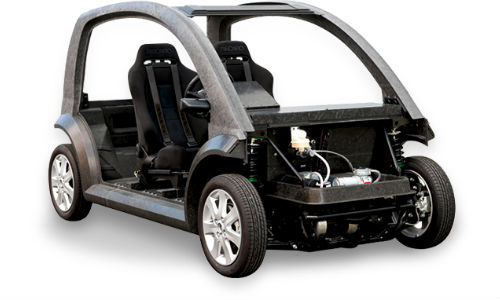By Mike Davey
Tokyo, Japan — September 14, 2016 — Japanese carbon fibre manufacturer Teijin has big plans. The company has announced it will purchase automotive composite supplier Continental Structural Plastics (CSP) in December 2016.
Make no mistake, Teijin’s plans are specifically geared towards providing in-demand materials for automotive construction. A statement from the company says it is targeting annual sales of $2 billion USD by 2030.
Teijin intends to use the acquisition to establish an automotive composite products business in North America, and to accelerate its expansion as a supplier of high-performance composites to the global automotive market.
CSP is a well-established player in thermoset composites for the automotive industry and the world’s largest sheet molding compound (SMC) manufacturer for automakers. The company is headquartered in Michigan and was founded in 1969. Surfaces produced by its SMC technology have been adopted by various automakers in the US, Europe and Japan. The company has 14 facilities in the US, Mexico, France and China, and approximately 3,200 employees. It posted consolidated sales of over $634 million USD in the fiscal year ending December 31, 2015.
The race to bring relatively low-cost carbon fibre to the automotive world is on. Collision Repair magazine recently reported that LeMond Composites in Tennessee is collaborating with the Oak Ridge National Laboratory to produce carbon fibre, specifically for use in automobiles.
A statement from Teijin says the company will benefit from CSP’s established sales channels in North America. The acquisition will also allow the combined businesses to provide a broader range of solutions to the automotive industry.
CSP specializes in thermoset composites, while Teijin’s expertise is in thermoplastics. The difference between the two is that thermoplastics can be melted back into a liquid and reshaped. Thermoset composites, however, remain in a permanent solid state after manufacturing.
Traditionally, most of the composites in the automotive industry have been of the thermoset type, although there are thermoplastics around as well.
“We are confident that the platform for automotive composite products business we will gain through the acquisition of CSP’s complementary technical expertise in thermoset composites and GFRP (glass fibre reinforced plastic – Ed.) know-how will trigger further development of our integrated high-performance materials business, one of our key strategic fields,” said Jun Suzuki, President and CEO of Teijin.
The company has been funding research into new processes to back up those goals. The Teijin Composites Innovation Centre was established in 2008, focused on developing leading-edge composite product technologies and applications.
That research paid off in 2011 when the company developed the world’s first mass-production technology for carbon fibre reinforced thermoplastics (CFRTP), with a production interval of just one minute. The high costs of carbon fibre are due in part to the lengthy production time of traditional methods. New methods such as this will serve to bring the cost down and likely make it more attractive to automakers.
Teijin built a concept car in 2011, in part to demonstrate the capabilities of the new process. The body structure is constructed of Teijin’s thermoplastic CFRP. Carbon fibre structures have approximately 10 times the strength of an equivalent steel structure, but only about a quarter of the weight.
The total weight of the body structure of Teijin’s concept car is just 47 kg, or approximately 104 lbs. A lower weight body structure has benefits all down the line for auto manufacturers: a lighter engine, lighter brakes and suspension, etc. In other words, lightweighting the body structure leads to lower weights throughout the vehicle. This is vital as the OEMs try to hit various fuel-efficiency and lightweighting targets in the near future.





































